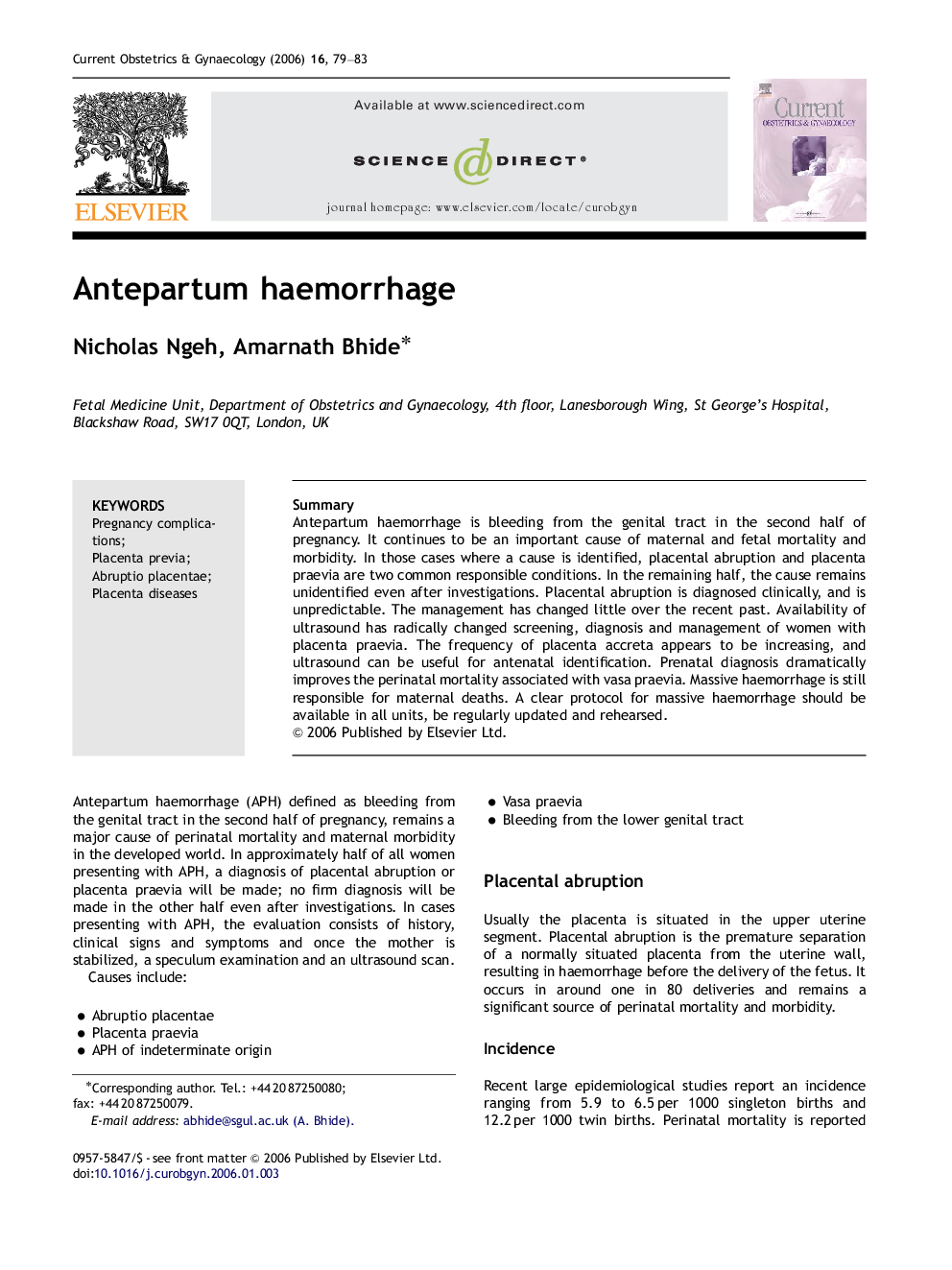| Article ID | Journal | Published Year | Pages | File Type |
|---|---|---|---|---|
| 3916322 | Current Obstetrics & Gynaecology | 2006 | 5 Pages |
SummaryAntepartum haemorrhage is bleeding from the genital tract in the second half of pregnancy. It continues to be an important cause of maternal and fetal mortality and morbidity. In those cases where a cause is identified, placental abruption and placenta praevia are two common responsible conditions. In the remaining half, the cause remains unidentified even after investigations. Placental abruption is diagnosed clinically, and is unpredictable. The management has changed little over the recent past. Availability of ultrasound has radically changed screening, diagnosis and management of women with placenta praevia. The frequency of placenta accreta appears to be increasing, and ultrasound can be useful for antenatal identification. Prenatal diagnosis dramatically improves the perinatal mortality associated with vasa praevia. Massive haemorrhage is still responsible for maternal deaths. A clear protocol for massive haemorrhage should be available in all units, be regularly updated and rehearsed.
